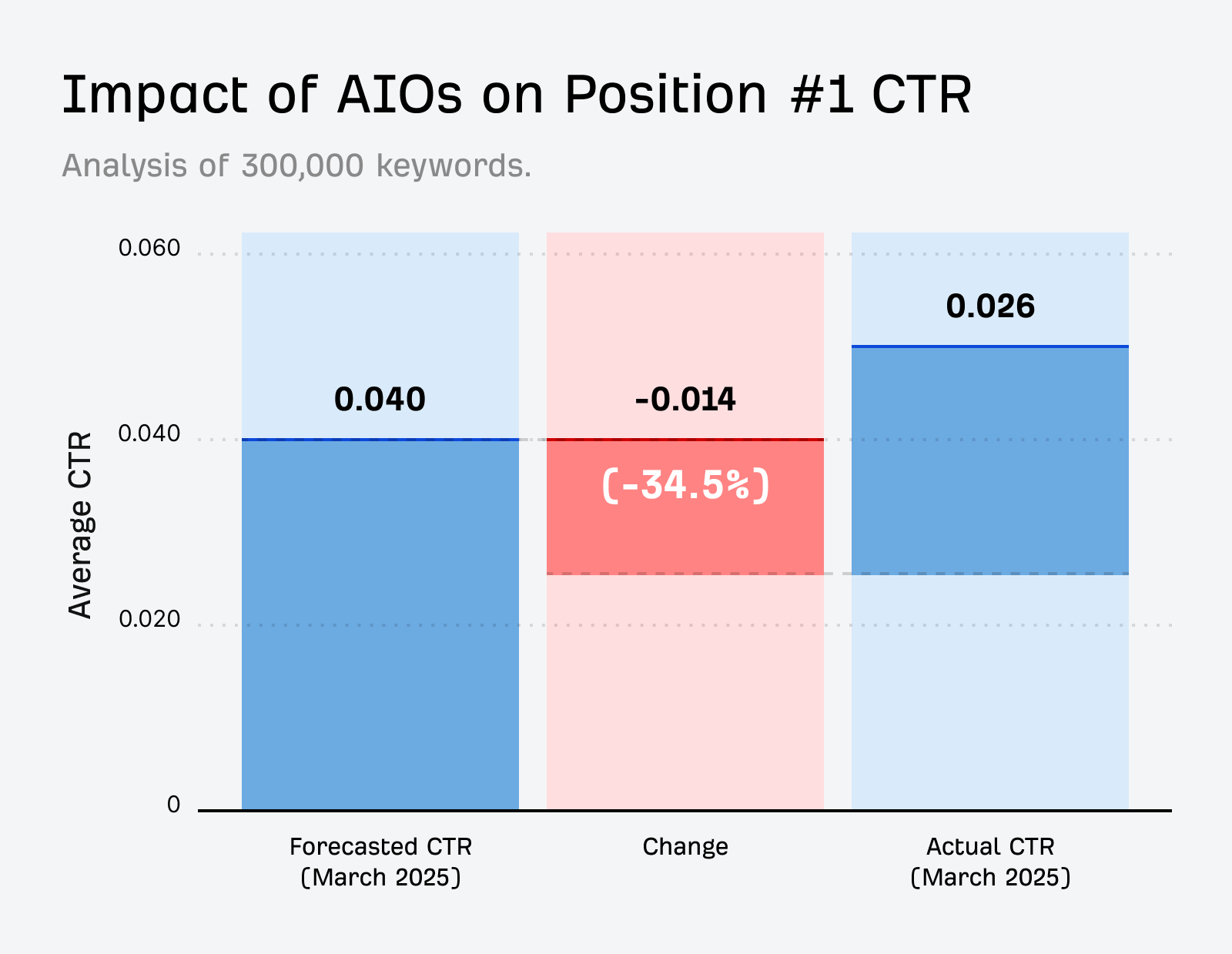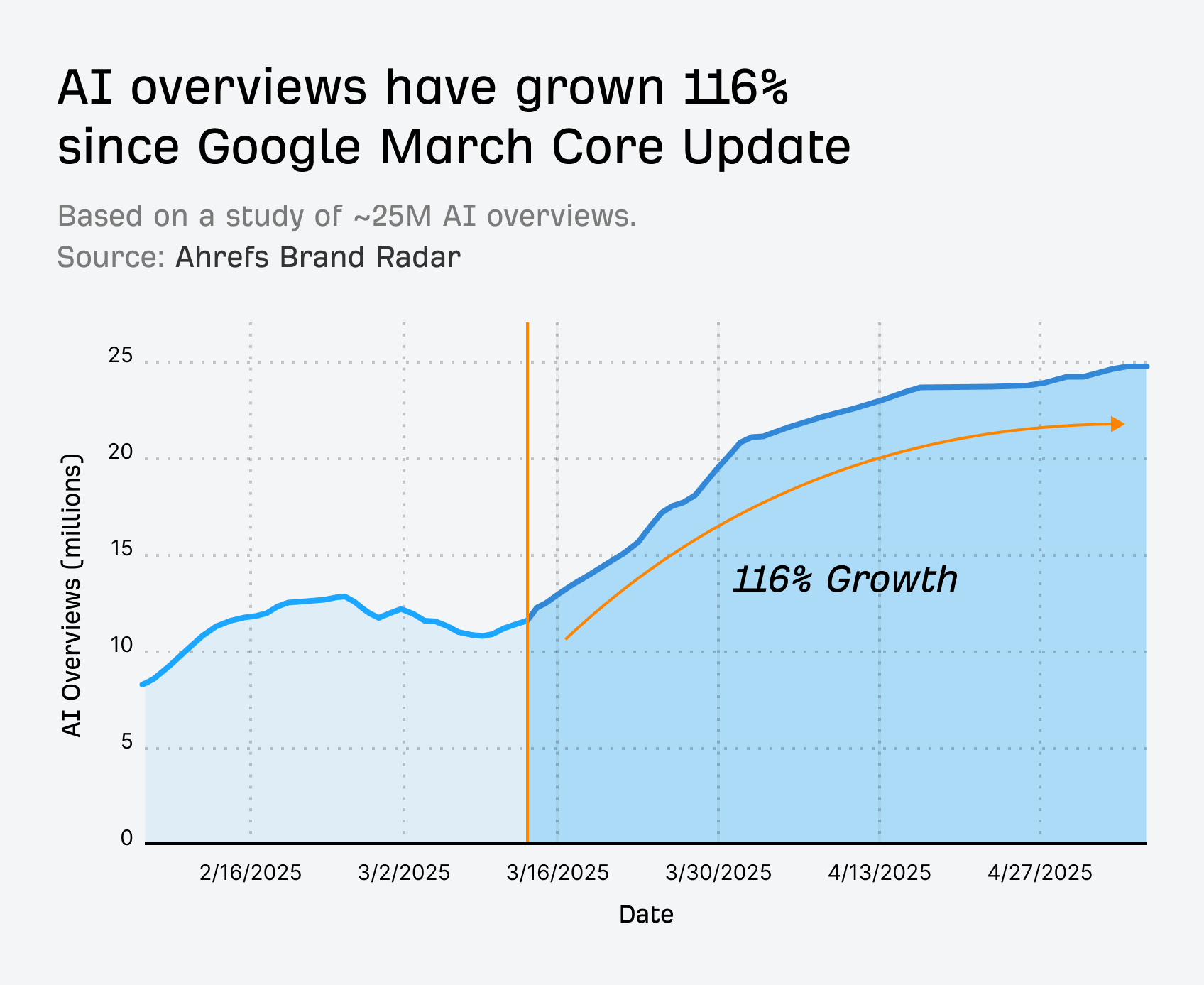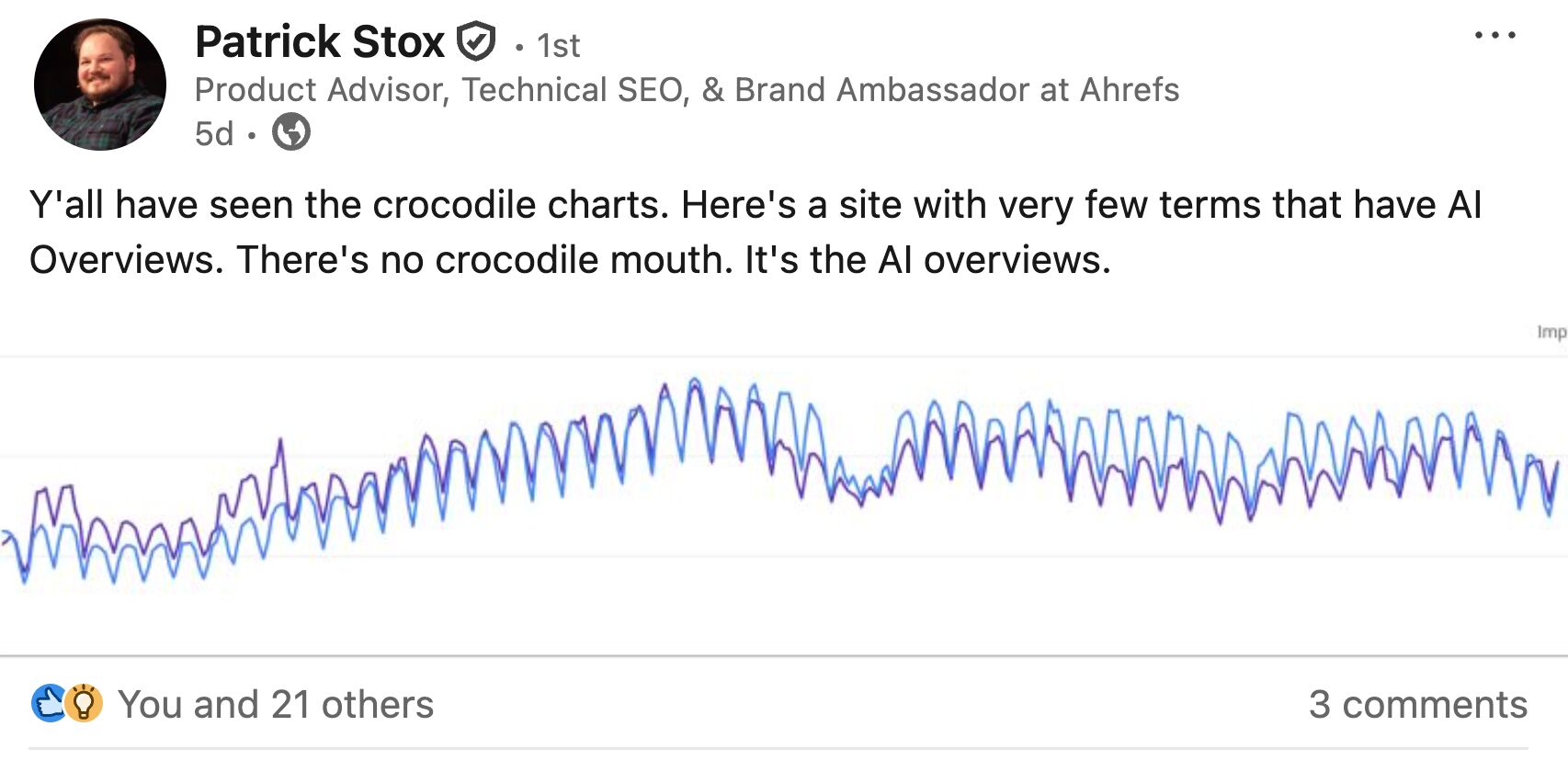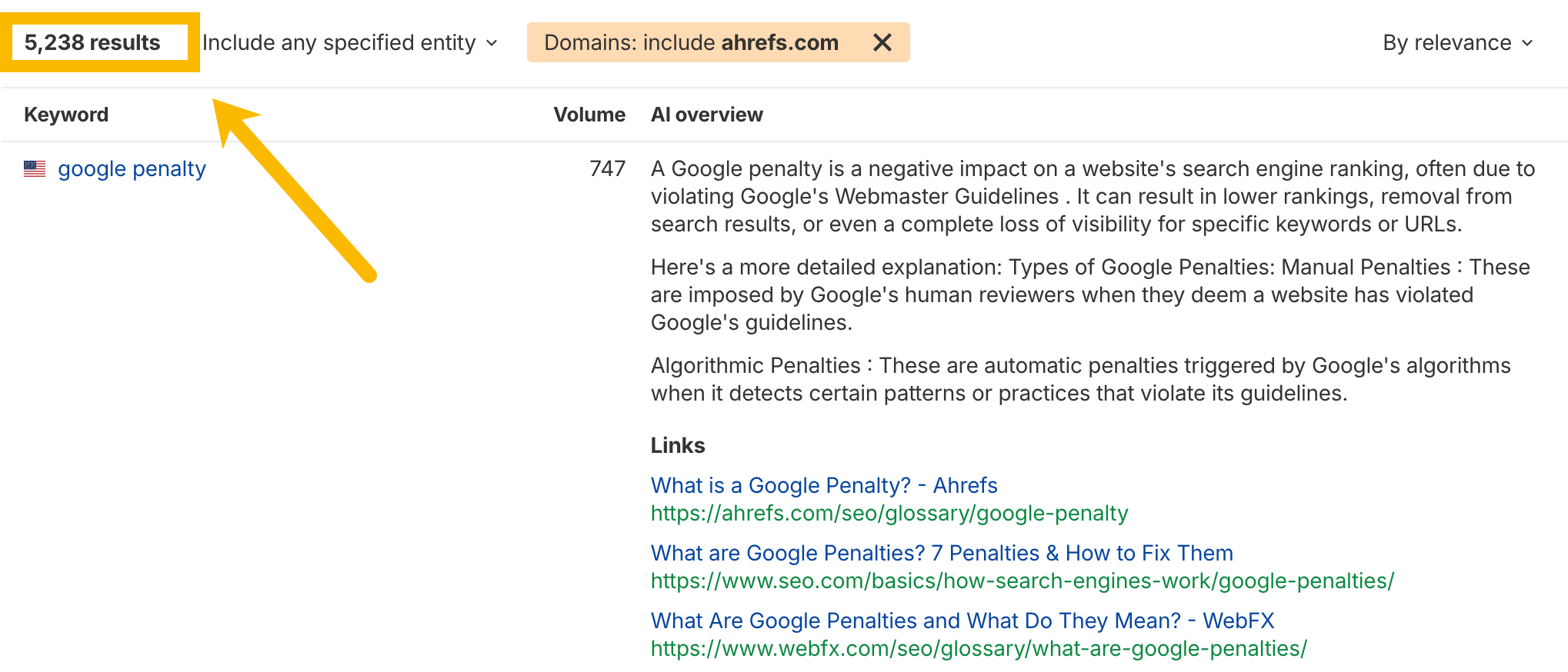If your Google Search Console chart looks like an open-mouthed crocodile, with clicks plummeting as impressions soar, here’s why.
The roll-out of AI Overviews now creates two opportunities for top-ranking content to log impressions for a given keyword, while simultaneously reducing the number of people who click from the search engine results page (SERP) into your content.
If your boss is giving you a hard time over this, it really isn’t your fault. As this SERoundtable article attests to, this is something being observed across the industry (comments on my recent LinkedIn post corroborate this, too).
And we’re impacted. Here’s what this looks like for the Ahrefs blog, via the GSC report in Ahrefs:

In the six-month period at the end of 2024, the daily impressions and clicks for the Ahrefs blog showed a positive correlation of 0.425. Clicks and impressions generally increased together. You can see this in the graph above: both lines generally move up and down in tandem.
In the first six months of this year, that correlation has changed radically to a negative correlation of -0.352. Now, as impressions climb, clicks tend to decrease at the same time. Impressions are soaring while clicks are plummeting. Clicks and impressions have become decoupled from one another—one can grow while the other declines.
Hence what Darwin Santos perfectly dubbed “The Great Decoupling”. One of the few hard-and-fast rules of SEO no longer holds. Thanks Google.
Impressions are increasing because AI Overviews now give companies two chances to log an impression for a given keyword: once as a “traditional” blue link in the search results, and again as a citation in an AI Overview.
Most AI Overview citations seem to be pulled from content that already ranks highly in the traditional search results (per one study, “Three-quarters of the links cited in Google AI Overview appear in position 12 or higher in the organic search results”).
If your content already ranks highly enough to earn a decent number of organic impressions, there’s a good chance it could also be cited in an AI Overview and earn impressions there, too.
At the same time, clicks are decreasing because AI Overviews are increasing zero-click searches. Searchers can get all the information they need to resolve their query without leaving the search results page.
When we studied this at scale across 300,000 keywords, we found that the presence of an AI Overview correlates with a 34.5% reduction in clickthrough rate.

So, at the same time that impressions are soaring, clicks are at an all-time low.
The period of this widening gap between clicks and impressions corresponds with the large-scale rollout of AI Overviews. Alongside the March Core update, we found that the presence of AI Overviews doubled, increasing by 116%—the same time these “crocodile mouths” appeared:

And, as Ahrefs’ Patrick Stox points out, sites with very few AI Overviews do not share this same pattern:

The great decoupling will probably continue until AI Overviews finish rolling out—but now that it seems likely that AI Mode will become the default search experience, it’s possible this trend could continue.
You can use the SERP features filter to see exactly where AI Overviews are triggering for your keyword rankings.
Head to Ahrefs’ Site Explorer, navigate to the Organic keywords report, and select AI Overview from the SERP features filter. Filter to keywords where your domain ranks in Position: 1-10, and you’ll see the keywords most likely to receive impressions from both organic rankings and an AI Overview:

When I do this for Ahrefs, I can see over 19,000 keywords that trigger an AI Overview and include Ahrefs in the top ten results:

Using Ahrefs’ new AI visibility tool, Brand Radar, you can then filter our database of AI Overviews to see those that include a link to your URL:

Here, I can see over 5,000 keywords that include Ahrefs as a citation. Any keywords that appear both here and in the previous report are likely to be suffering from increased impressions and reduced clicks, pulling double-duty in both the organic results and the AI Overview.
Final thoughts
I’ve seen hundreds of GSC accounts over the years, and until recently, never seen a pattern like this. Now it’s everywhere.
In the past, blog traffic growth seemed well correlated with business growth. But today, I see that correlation weakening. This isn’t a case of one blog bleeding traffic—this is an entire industry being recalibrated in real-time.
But it’s not all doom and gloom. While our clicks are tanking because of AI search, recent data from Patrick Stox shows that—at least on the Ahrefs website—visits from AI search convert 23x better than visits from traditional search.
The way content marketing functions is very different, but guess what? There are more potential customers in the world, more demand for products and services. That is the real determinant of growth, not clicks to a blog. We’ll find different ways to reach those people.
(But we should probably change our traffic growth targets…)